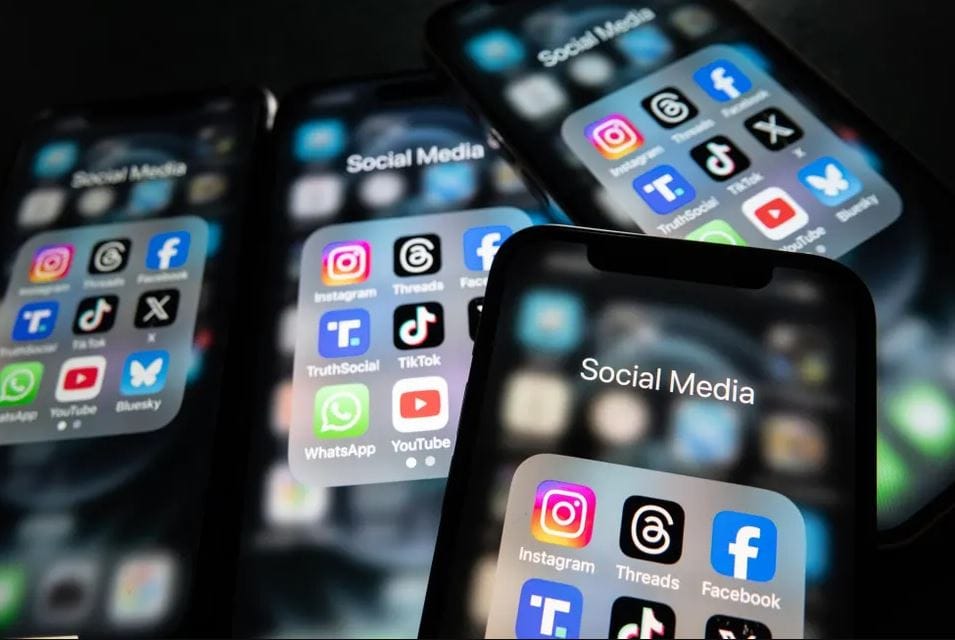How ICE Plans to Monitor Your Social Media Posts 24/7 for Enforcement Leads

When most people think about immigration enforcement, they imagine border crossings and airport checks. But now, the main focus might be on your social media posts.
U.S. Immigration and Customs Enforcement (ICE) has put out a call for private companies to help start a non-stop social media watching program. The call says these companies will get paid to look through “Facebook, Google+, LinkedIn, Pinterest, Tumblr, Instagram, VK, Flickr, Myspace, X (formerly Twitter), TikTok, Reddit, WhatsApp, YouTube, etc.,” and turn public posts into tips that go straight into ICE's records.
The call for information sounds like a story from a spy movie: many analysts working in turns, quick deadlines down to minutes, a system that ranks high-risk people first, and advanced software that watches all the time.
ICE already checks social media with a tool called SocialNet that watches most big online sites. The agency has also hired Zignal Labs for its AI-based social media tracking system.
Customs and Border Protection checks social media on some travelers' devices at entry points. The U.S. State Department looks at social media when foreigners apply for visas to come to the United States.
What would change is not just how much they watch, but how it's set up. Instead of government workers collecting info one case at a time, ICE is creating a system where private companies and the public help watch. This turns normal online actions into possible proof.
Private companies would collect public data, like posts, photos, videos, and other info. They could link that to data from business sources like LexisNexis Accurint and Thomson Reuters CLEAR, plus government records. Analysts would have to make files for ICE offices fast—sometimes in just 30 minutes for urgent cases.
These files don't stay alone. They go into Palantir Technologies' Investigative Case Management system, which is the main digital tool for immigration enforcement today. There, social media info joins things like license plate scans, utility bills, property records, and body scans. This creates a full, searchable picture of someone's life.
Officially, ICE says it will focus on people already in cases or seen as threats. But in reality, it catches a lot more.
The risk is that if one person gets flagged, their friends, family, group members, or anyone they know might get checked too. Past deals for face recognition and location tracking show how these systems grow beyond what they started as. What begins as enforcement can become watching whole groups of people.
ICE calls this an update: a way to find where someone is by spotting fake names and patterns that old methods miss. Planning papers say companies can't make fake accounts and must keep all work on ICE's computers.
But past events show these rules often don't hold up. Reports have shown how sharing data unofficially between local police and federal agents let ICE use systems it wasn't allowed to. The agency has bought huge data sets from sellers to avoid needing warrants. And even with a White House ban on spyware buying, ICE restarted a deal with Paragon's Graphite tool, which can reportedly get into secure apps like WhatsApp and Signal.
At the same time, ICE's list of sellers keeps growing: Clearview AI for matching faces, ShadowDragon’s SocialNet for mapping connections, Babel Street’s Locate X for location history, and LexisNexis for finding people. ICE is also buying tools from PenLink that mix location data with social media. Together, these make ongoing, automatic watching not just possible, but normal.
The United States isn't the only country with government social media checks. In the United Kingdom, a new police team that scans online talks about immigration and public unrest has been criticized for mixing safety with watching politics.
Around the world, spyware problems have shown how tools first meant for fighting terrorism get used against reporters and protesters. Once these systems are in place, they tend to expand their use, called mission creep or function creep.
Constant watching doesn't just collect info—it changes how people act.
Studies found that visits to Wikipedia pages on terrorism fell a lot right after news about the National Security Agency's worldwide spying in June 2013.
For immigrants and activists, the risks are bigger. A post about a protest or even a joke can be seen as “intelligence.” Knowing contractors might watch in real time makes people hold back on what they say and join in less. In this setup, your online self—made of body markers, computer labels, risk scores, and digital tracks—becomes a danger that follows you everywhere online.
What's really new is handing over decisions to private companies. ICE isn't just getting more data; it's letting outsiders judge it. Private analysts, with AI help, will likely decide what online actions look risky and what don't. This happens fast and for many people, mostly without public checks.
Also, putting all data together means social media can now mix with location and body info in Palantir's center. Enforcement relies more on linking data, which raises issues about fair treatment.
ICE's call for information will likely turn into a full contract soon. Recent court cases from groups like the League of Women Voters and the Electronic Privacy Information Center against the Department of Homeland Security show that checks on this lag way behind the tech. ICE's plan for always-open watch rooms—big indoor spaces with screens and computers, staffed all day every day—shows this isn't a short test but a new way of working.
Openness begins with sharing the computer rules and scoring systems ICE uses. Groups like the American Civil Liberties Union say police should need warrants online just like in real life. The Brennan Center for Justice and the ACLU want outside checks on these systems for fairness and errors. Some U.S. senators have proposed laws to limit big data buys from sellers.
Without steps like these, I think the line between border control and daily life will keep fading. As the online border grows, it could catch anyone whose online activity the system can read.





